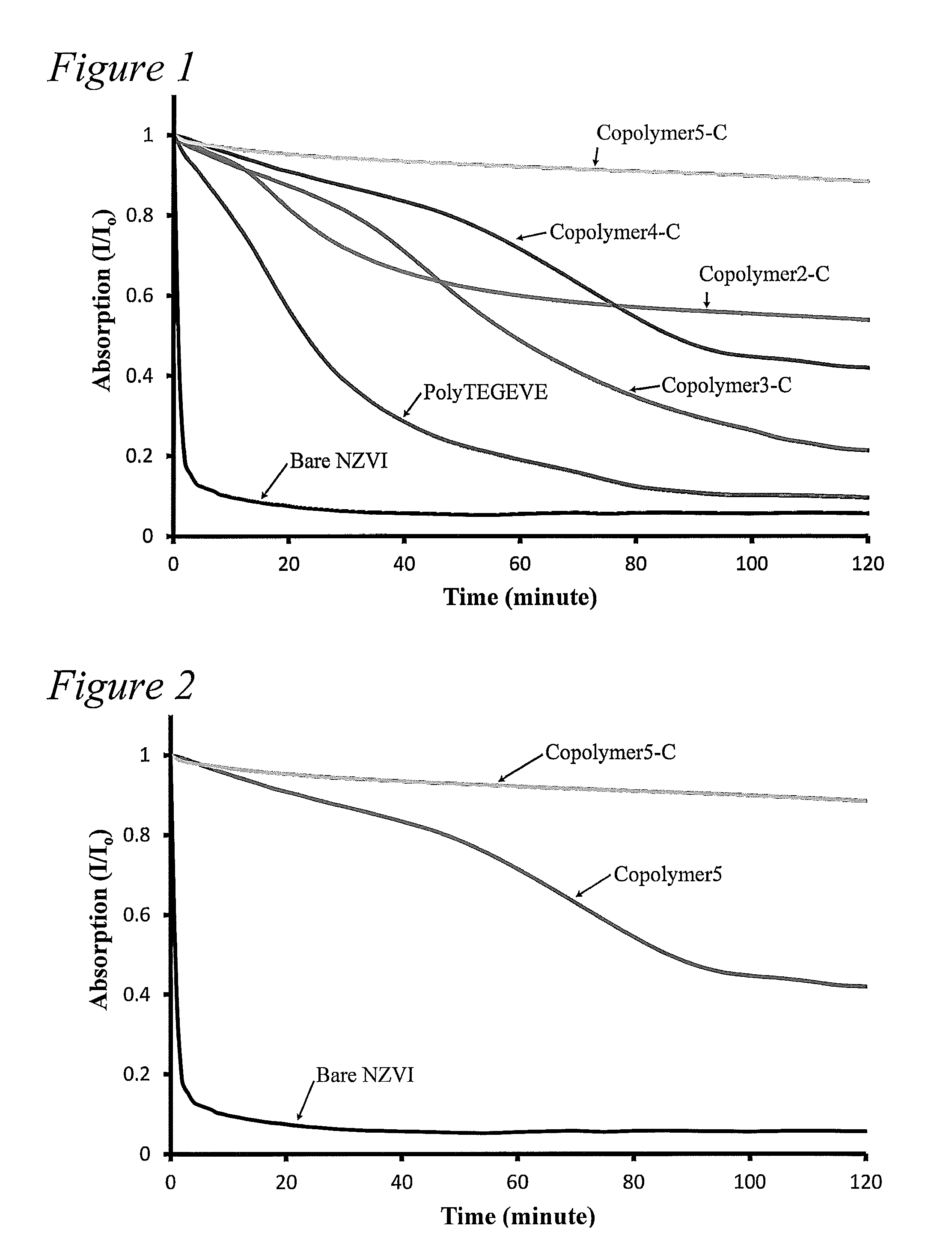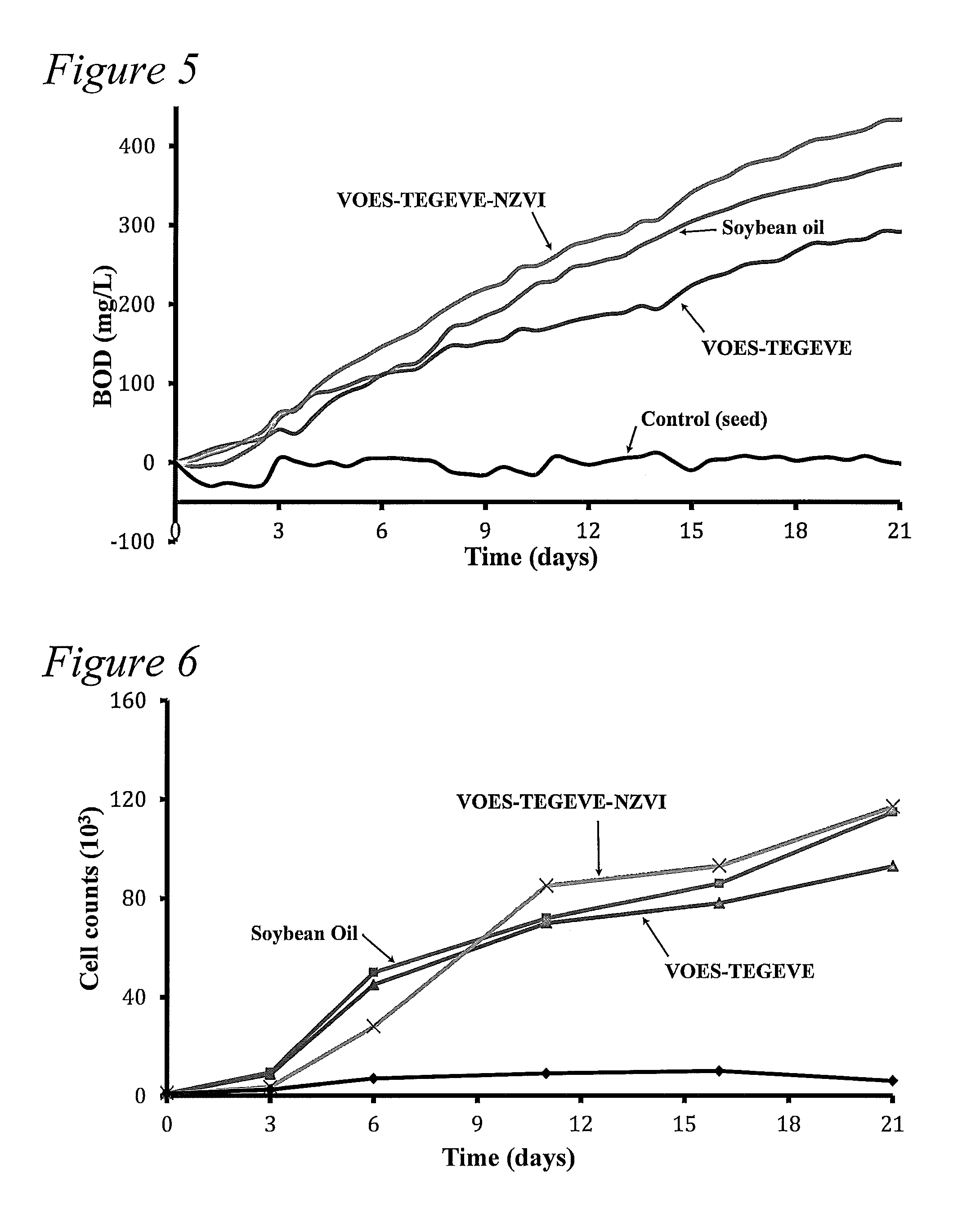Vegetable oil-based polymers for nanoparticle surface modification
a technology of vegetable oil and nanoparticles, applied in the field of vegetable oil-based polymers for nanoparticle surface modification, can solve the problems of difficult suspension of nanoparticles in water, significant loss of reactivity, precipitation or sedimentation of metals from the aqueous phase, etc., to achieve high effective, facilitate improved dispersion and suspension of fenps, and effectively inhibit the sedimentation effect of fenps
- Summary
- Abstract
- Description
- Claims
- Application Information
AI Technical Summary
Benefits of technology
Problems solved by technology
Method used
Image
Examples
example 1
Sedimentation Study
Synthesis of Vinyloxyethoxy Soyate (VOES) Monomer
[0088]VOES was synthesized as follows: First, 0.42 g of KOH was dried an oven at 140° C. for 30 minutes to remove moisture. Then, 15 g of Soybean oil, 15 g of ethylene glycol monovinyl ether, and the dried KOH were mixed together in a two-neck round bottom flask and stirred for 3 hr at 70° C. The reaction mixture was then cooled to room temperature and transferred to a 250 ml separating funnel. 100 ml of n-hexane was added to the separating funnel and the solution washed with acidic, deionized (DI) water (pH 3-3.5) twice and then washed multiple time with DI water and finally with brine solution. The organic layer was dried over MgSO4 and the product isolated by vacuum stripping volatiles. Yield: 13 g (84%). 1H NMR (400 MHz, CDCl3, TMS): δ (ppm) 6.45 (m, 1H), 5.34 (m, 1.5H), 4.28 (t, 2H), 4.16 (dd, 1H), 4.01 (dd, 1H), 3.85 (t, 2H, —CH—O—CH2—CH2—), 2.76 (m, 1.5H), 2.30 (t, 2H,), 2.03 (m, 4H), 1.57 (m, 2H), 1.29 (m, 1...
PUM
| Property | Measurement | Unit |
|---|---|---|
| temperature | aaaaa | aaaaa |
| temperature | aaaaa | aaaaa |
| temperature | aaaaa | aaaaa |
Abstract
Description
Claims
Application Information
 Login to View More
Login to View More - R&D
- Intellectual Property
- Life Sciences
- Materials
- Tech Scout
- Unparalleled Data Quality
- Higher Quality Content
- 60% Fewer Hallucinations
Browse by: Latest US Patents, China's latest patents, Technical Efficacy Thesaurus, Application Domain, Technology Topic, Popular Technical Reports.
© 2025 PatSnap. All rights reserved.Legal|Privacy policy|Modern Slavery Act Transparency Statement|Sitemap|About US| Contact US: help@patsnap.com



